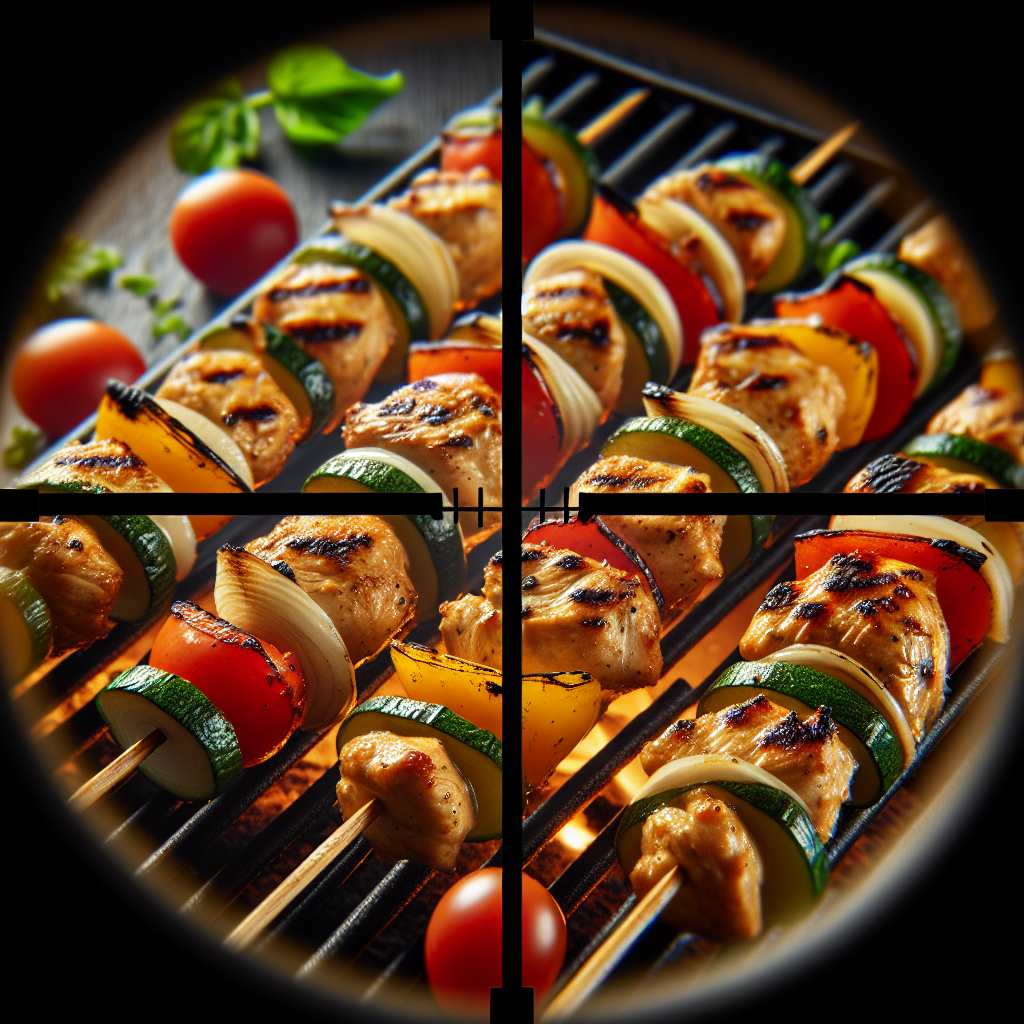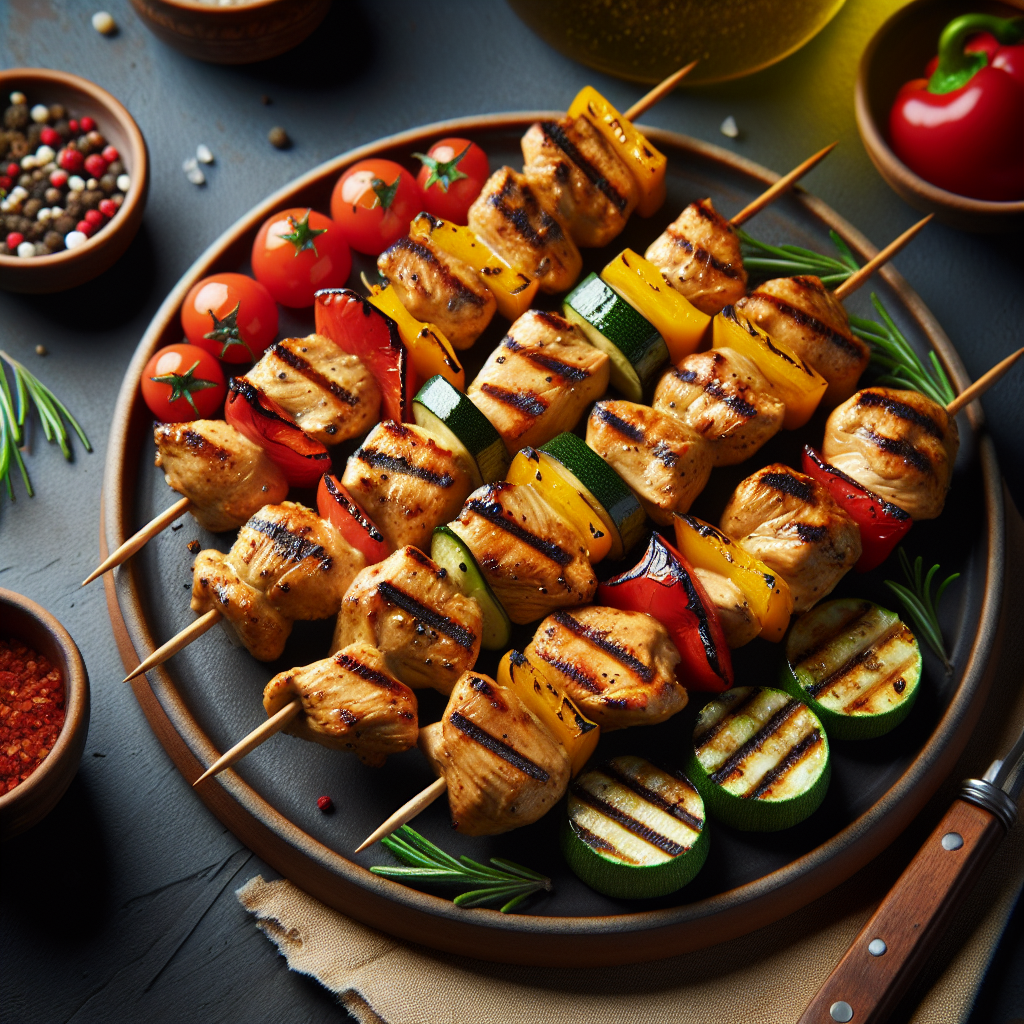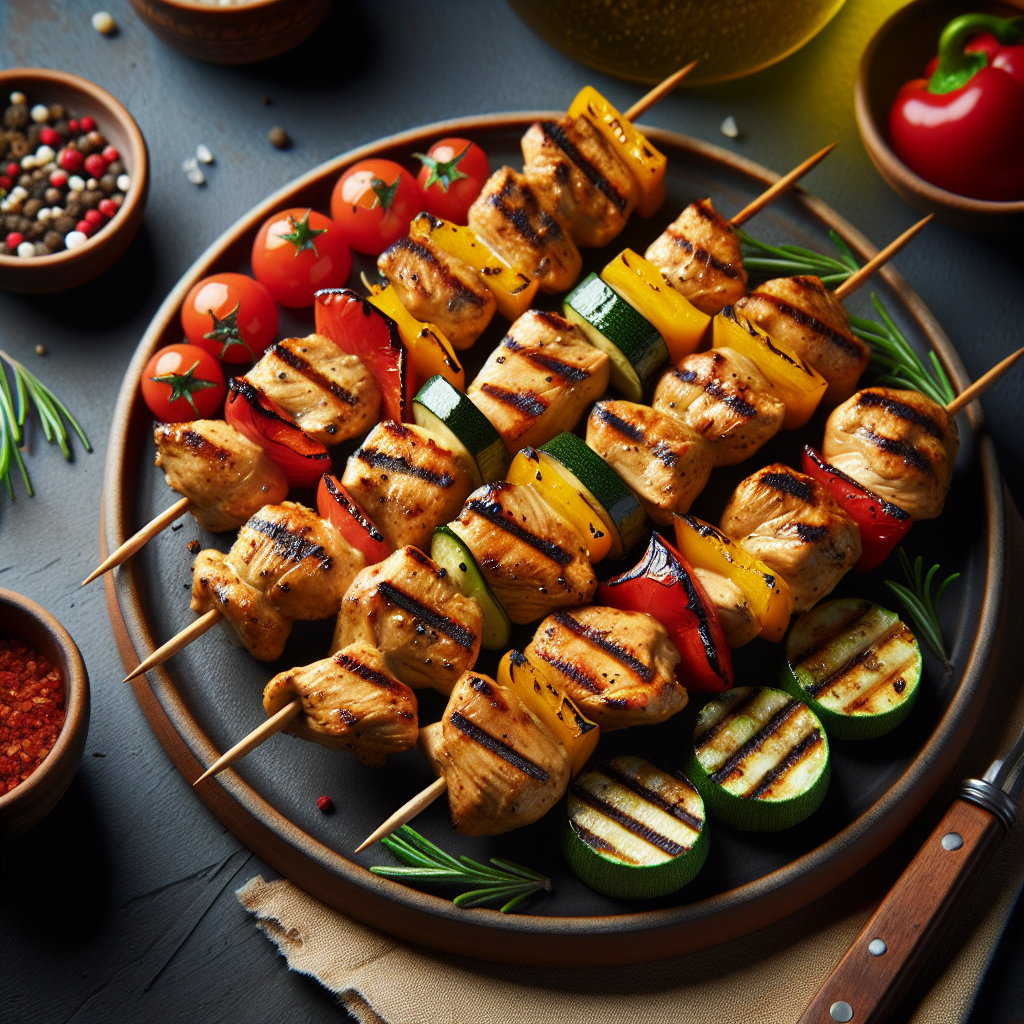Grilling chicken kabobs is a delightful way to enjoy tender, flavorful bites that are perfect for any occasion. From backyard barbecues to cozy dinners, these juicy skewers are guaranteed to be a crowd-pleaser. In this article, you will learn the steps to achieving grilled chicken kabobs that are succulent, delicious, and bursting with savory goodness. With our simple yet essential tips, you’ll soon be mastering the art of grilling these delectable delights, making you the hero of every cookout. So grab your skewers and get ready to tantalize taste buds with our foolproof method!

Choosing the Right Chicken
Fresh or Frozen?
When it comes to choosing chicken for your kabobs, you have the option of using fresh or frozen chicken. Fresh chicken is usually preferred as it tends to have a better texture and flavor. However, if fresh chicken is not easily accessible or you prefer the convenience of having chicken on hand at all times, then frozen chicken can be a viable option. Just make sure to properly thaw the chicken before marinating and grilling.
Skinless or Skin-on?
Whether to choose skinless or skin-on chicken for your kabobs is a matter of personal preference. Skinless chicken is a healthier option as it has less fat, but it may lack the crispy texture that some people enjoy. On the other hand, skin-on chicken can add extra flavor and juiciness to your kabobs. It all depends on the flavor and texture you’re looking for in your grilled chicken.
Boneless or Bone-in?
The choice between boneless or bone-in chicken for your kabobs can affect both the cooking time and the eating experience. Boneless chicken is quicker to cook as it doesn’t have the bone to slow down the cooking process. It also provides convenience when it comes to eating, as you don’t have to deal with bones. On the other hand, bone-in chicken can offer more juiciness and flavor to your kabobs. It’s a matter of personal preference and the overall desired cooking experience.
Preparing the Chicken
Trimming and Cutting
Before marinating and grilling the chicken, it’s important to trim any excess fat, skin, or unwanted parts. This not only enhances the visual appeal of the kabobs but also ensures even cooking. Additionally, cutting the chicken into uniform pieces will help in achieving consistent cooking times. Aim for 1 to 1.5-inch cubes if you’re using boneless chicken, or adjust the size depending on the bone-in pieces.
Marinating the Chicken
Marinating the chicken is a crucial step in adding flavor and tenderness to your kabobs. You can create your own marinade using a combination of herbs, spices, oils, and acids like lemon juice or vinegar. Alternatively, you can use pre-made marinades available in stores. Let the chicken marinate in the refrigerator for at least 30 minutes, or up to 24 hours for maximum flavor infusion.
Soaking Wooden Skewers
If you’re using wooden skewers, it’s important to soak them in water before assembling the kabobs. This helps to prevent the skewers from burning on the grill. Soak the skewers for at least 30 minutes or longer to ensure they don’t catch fire during the grilling process. This simple step will save you from the disappointment of having your kabobs ruined by burnt wooden skewers.
Selecting the Vegetables
Choosing the Vegetables
When selecting vegetables for your kabobs, it’s important to choose ones that will hold their shape and have a similar cooking time as the chicken. Suitable options include bell peppers, onions, zucchini, cherry tomatoes, mushrooms, and pineapple. Choose vegetables that are firm and ripe, as they will grill better and provide a delicious charred flavor.
Cutting the Vegetables
To ensure even cooking, it’s important to cut the vegetables into similar-sized pieces as the chicken. This will ensure that everything cooks at the same rate and avoids any unevenly cooked or burnt veggies. Aim for 1-inch pieces, and consider cutting the vegetables into chunks or strips to make them easier to thread onto the skewers.
Marinating the Vegetables
While marinating the vegetables is not necessary, it can enhance their flavors and make them more enjoyable to eat. Simply toss the vegetables in a mixture of oil, herbs, and spices before skewering them with the chicken. This will help to infuse the flavors and ensure that every bite is bursting with deliciousness.
Assembling the Kabobs
Alternate Chicken and Vegetables
To create visually appealing kabobs and ensure even cooking, alternate between threading chicken and vegetables onto the skewers. This will help the flavors of the chicken and vegetables mingle together as they cook and provide a well-rounded taste in every bite. Be mindful of leaving enough space between each ingredient to allow for proper heat circulation.
Leave Space Between Ingredients
When assembling the kabobs, it’s essential to leave a small gap between each ingredient. This will prevent overcrowding and allow the heat to reach all sides of the chicken and vegetables, resulting in even cooking. Overcrowding the skewers can lead to unevenly cooked components and may affect the overall taste and texture of your kabobs.

Preheating the Grill
Cleaning the Grill Grates
Before preheating the grill, it’s important to clean the grill grates thoroughly. Use a grill brush to remove any food particles or residue from previous grilling sessions. This not only ensures a clean cooking surface but also helps to prevent any unwanted flavors from transferring to your chicken and vegetables.
Preheating the Grill to Medium-High Heat
To achieve the perfect grill marks and juicy results, it’s crucial to preheat the grill to medium-high heat. This temperature provides enough heat to sear the chicken and vegetables, creating a delicious caramelized exterior while keeping the insides tender and juicy. Preheating allows for optimum cooking conditions and helps to prevent sticking.
Oiling the Grill
Brushing the Grill Grates with Oil
To prevent the chicken and vegetables from sticking to the grill grates, it’s important to oil the grates before placing the kabobs on them. Use a brush or tongs to lightly coat the grates with cooking oil. This will create a non-stick surface, allowing for easy flipping and removal of the kabobs once they are cooked.
Avoiding Flare-ups
Flare-ups occur when the fat from the chicken or marinated juices drip onto the hot grill grates, causing flames to flare up. To avoid this, try to keep the grill lid closed as much as possible during cooking. Additionally, you can trim excess fat from the chicken to minimize the chance of flare-ups. If flare-ups do occur, move the kabobs to a cooler area of the grill or reduce the heat slightly.
Grilling the Kabobs
Direct Grilling Method
The direct grilling method involves cooking the kabobs directly over the heat source. Place the kabobs on the preheated grill grates and cook for about 4-6 minutes per side, depending on the thickness of the chicken and desired level of doneness. Rotate the kabobs occasionally to ensure even cooking and a nicely charred exterior.
Indirect Grilling Method
The indirect grilling method involves cooking the kabobs away from the direct heat source. This method is best for larger kabobs or when using bone-in chicken that requires longer cooking times. Light only one side of the grill and place the kabobs on the unlit side. Close the grill lid and cook for about 20-25 minutes, turning the kabobs once halfway through cooking.
Turning the Kabobs
When grilling kabobs, it’s important to turn them regularly to ensure even cooking on all sides. Use tongs or a spatula to gently flip the kabobs, being careful not to let them fall apart. Regular turning will prevent any sides from becoming overcooked and will help achieve a uniform char and tenderness throughout.
Checking for Doneness
Using a Meat Thermometer
The most accurate way to determine if your chicken is cooked thoroughly is to use a meat thermometer. Insert the thermometer into the thickest part of the chicken, making sure it doesn’t touch the bone. The chicken is considered safe to eat when the internal temperature reaches 165°F (75°C). This eliminates any guesswork and helps ensure that your chicken is safe to consume.
Checking Chicken for Firmness and Juiciness
If you don’t have a meat thermometer on hand, you can also check for doneness by gently pressing the chicken with tongs or a fork. Fully cooked chicken should feel firm to the touch and the juices should run clear, with no traces of pink. If the chicken feels soft or rubbery or the juices appear pink or cloudy, it needs more time on the grill.
Resting and Serving
Resting the Kabobs
After grilling, it’s important to allow the kabobs to rest for a few minutes before serving. This allows the juices to redistribute throughout the chicken, resulting in a more tender and flavorful bite. Simply transfer the kabobs to a clean plate and cover them loosely with foil. Let them rest for about 5 minutes before serving.
Garnishing and Serving
Once the kabobs have rested, it’s time to add the finishing touches. Consider garnishing them with fresh herbs like cilantro or parsley, a sprinkle of lemon zest, or a drizzle of your favorite sauce. Serve the kabobs on a platter or individual plates, along with sides like rice, salad, or warm bread. Enjoy the delicious flavors and textures of your perfectly grilled chicken kabobs!
Safety Tips
Using Food-safe Skewers
When using skewers, it’s important to choose skewers that are safe for food use. Wooden skewers should be made from untreated, food-grade wood to ensure they don’t release any harmful chemicals into the food. If using metal skewers, make sure they are made from food-grade stainless steel to avoid any potential reactions with acidic marinades or ingredients.
Avoiding Cross-contamination
To prevent cross-contamination, it’s essential to handle raw chicken with care. Wash your hands thoroughly before and after handling the chicken, and use separate cutting boards and utensils for raw poultry. Avoid placing cooked kabobs back on the same plate that held the raw chicken to prevent any potential foodborne illnesses.
Monitoring Grill Temperature
Throughout the grilling process, it’s important to monitor the grill temperature to ensure the chicken reaches a safe internal temperature. Using a grill thermometer, check that the grill remains at a consistent medium-high heat. This will help to prevent undercooked chicken and ensure that it’s safe to consume.
Grilling chicken kabobs is a wonderful way to enjoy a delicious and healthy meal with family and friends. By following these steps and safety tips, you’ll be able to create mouthwatering kabobs that are perfectly cooked, juicy, and full of flavor. So fire up that grill, get your ingredients ready, and let the grilling adventure begin!

